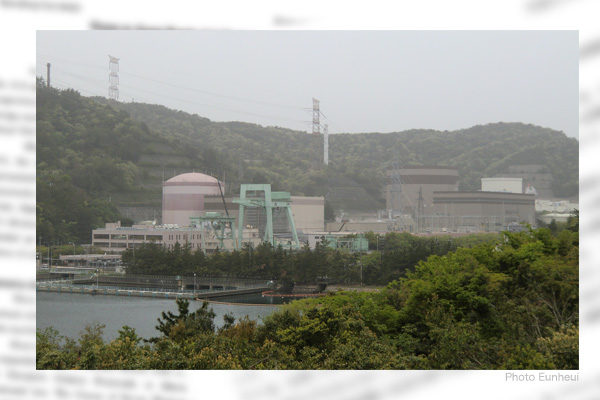On June 6 and 7, the Nuclear Regulation Authority (NRA) conducted an onsite survey on active faults at Unit 2 of the Tsuruga Nuclear Power Station of Japan Atomic Power Co. in Fukui Prefecture. Tsuruga Unit 2 is undergoing a safety review in accordance with new regulatory standards towards restarting. The review has been prolonged due to an endless debate over whether the strata cracks (called a fracture zone) on the site represent active faults, unauthorized revisions to the documents for the review (taken by the NRA as falsification), and interruptions accompanying 1,300 revisions to relevant reports. NRA Commissioner Akira Ishiwatari said that based on the onsite survey in June, a decision would be made in July on whether the strata cracks on the site represent active faults. However, the discussions have not yet been coordinated well during the review process. Any hasty decision that would run counter to the government's basic policy of “maximizing the use of nuclear energy” should be avoided.
Safety of nuclear reactors has been improved
The current debate over Tsuruga Unit 2 focuses on whether the DI fracture zone, which branches off from the Urasoko Fault, an active fault located 300 meters away from the reactor building, is connected to the K Fault that could be an active fault. I was appointed as the chief examiner of the Atomic Energy Society's investigative committee on fault activity and engineering risk assessment, and compiled and published a report after three years of examination between 2014 and 2017. The report has been sent to NRA Commissioner Ishiwatari as well.
The report concluded that the main fault that runs from 20-30 kilometers underground to the surface (which is an active fault connected to the epicenter, or an epicenter fault) is different from its branch fault and the shallow sub-faults that are formed secondarily; and that even if the epicenter fault is located directly beneath the reactor building, its impact on the reactor building is limited to a 2-meter-wide strip, allowing at least one of the multiple emergency core cooling systems to survive and cool the reactor core, so the substantive risk will be reduced by engineering safety measures.
At the time of the Kumamoto Earthquake, Tokai University’s reinforced concrete building above an active fault retained almost its original form despite floor cracks. Furthermore, experts such as Professor Koji Okumura of Hiroshima University are of the opinion that the controversial D1 fracture zone as a normal fault (that goes down when it is pulled) is not connected to the K Fault that is a reverse fault (that rises up under compressive force) as they have different displacement directions.
There is no point in sticking to cracks
The current review of nuclear reactors for the restart is carried out in accordance with the new regulatory standards established in 2013. The most time-consuming step of the review is the examination of the relationship between the earthquake and the ground, such as the presence or absence of active faults on the site and liquefaction countermeasures in the event of a fault displacement. From an engineering point of view, the presence or absence of an epicenter fault is important. I doubt if it is meaningful to discuss whether or not a fracture zone that branches off from the main fault is an active fault.
The U.S. Nuclear Regulatory Commission has articulated five principles of activity and put emphasis on ‘regulatory efficiency’ to avoid burdening the public. On the other hand, Japan's NRA does not emphasize efficiency. As a result, it calls for highly costly safety measures and consumes more than 10 years on the review of one reactor, failing to observe the rule limiting a review to some two years under the Administrative Procedure Act.
Tadashi Narabayashi is a specially appointed professor at the Tokyo Institute of Technology and a director at the Japan Institute for National Fundamentals.


